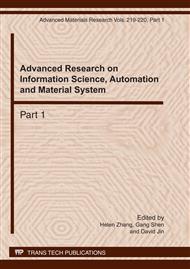p.786
p.791
p.795
p.799
p.804
p.809
p.814
p.820
p.824
The Research with Advanced Oxidation Technology to Degrade Organic Matter in Micro-Polluted Water
Abstract:
Potassium permanganate process is an advanced oxidation technique that can provide a resolution removing organic matter in contaminated water. In this paper, the combination of composite potassium permanganate and a certain coagulant used in this process, which it was particularly suited to rapidly oxidize and degrade pollutants. It was an effective enhanced coagulation, advanced oxidation technique that could be conducted in a normal micro-polluted water environment. A series of experiment results demonstrated that the best adding quantity of composite potassium permanganate was 1.5-3.0mg/l, the best adding quantity of PFS as the coagulant was 25mg/l. Under the above conditions, potassium permanganate oxidation obviously reduced to each pollution index and greatly improved the water quality of purification of micro-polluted water. Furthermore, the organic removal rate with composite potassium permanganate was more than the unitary potassium permanganate process and the current traditional process.
Info:
Periodical:
Pages:
804-808
Citation:
Online since:
March 2011
Authors:
Price:
Сopyright:
© 2011 Trans Tech Publications Ltd. All Rights Reserved
Share:
Citation:


